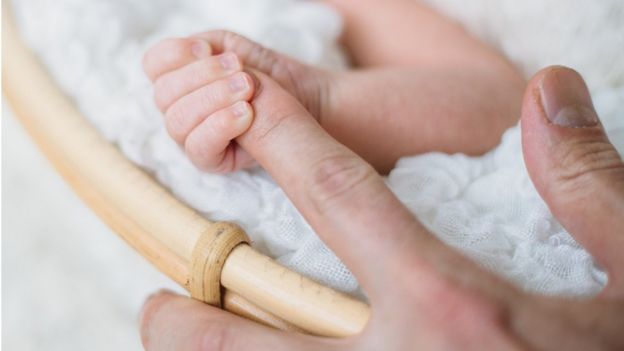Mothers should wait at least a year between giving birth and getting pregnant again to reduce health risks to mother and baby, a new study says.
But researchers say they need not wait as long as the 18 months recommended in the current World Health Organization guidelines.
Small gaps between pregnancies risk premature births, smaller babies and infant and mother mortality.
The researchers hope the findings will be “reassuring” for older women.
Senior study author Dr Wendy Norman said it was “encouraging news” for women over 35 who were planning their families.
“Older mothers for the first time have excellent evidence to guide the spacing of their children,” she said.
“Achieving that optimal one-year interval should be doable for many women and is clearly worthwhile to reduce complication risks.”
The study, of nearly 150,000 births in Canada, by University of British Columbia (UBC) and the Harvard TH Chan School of Public Health is published in JAMA Internal Medicine.
The study found 12-to-18 months was the ideal length of time between giving birth and becoming pregnant again.
Current World Health Organization guidelines recommend an ideal interval of 24 months and no fewer than 18 months.
The researchers also found:
- Getting pregnant less than 12 months after giving birth was associated with risks for women for all ages
- There were risks to the mother only for women over the age of 35, while risks to the infant were found for all women, but were greatest for those aged between 20 and 34
- Women over 35 who conceived six months after a previous birth had a 1.2% risk of maternal mortality or harm (12 cases per 1,000 pregnancies)
- Waiting 18 months between pregnancies reduced the risk to 0.5% (five cases per 1,000)
- Younger women who got pregnant six months after a previous birth had an 8.5% risk of premature labour
- This dropped to 3.7% if they waited 18 months between pregnancies
The study’s lead author, Laura Schummers, said: “Our study found increased risks to both mother and infant when pregnancies are closely spaced, including for women older than 35.
“The findings for older women are particularly important, as older women tend to more closely space their pregnancies and often do so intentionally.”

The study looked at only one population of women – in Canada – so it is unclear how applicable this would be worldwide.
Researcher Dr. Sonia Hernandez-Diaz said the findings suggested different risks for each age group.
“Short pregnancy spacing might reflect unplanned pregnancies, particularly among young women.
“Whether the elevated risks are due to our bodies not having time to recover if we conceive soon after delivering or to factors associated with unplanned pregnancies, like inadequate prenatal care, the recommendation might be the same: improve access to postpartum contraception, or abstain from unprotected sexual intercourse with a male partner following a birth.”
Mandy Forrester, from the Royal College of Midwives, said the study was “useful research and builds on previous research into birth spacing”.
“Ultimately, it will be a woman’s choice, whatever age they are, about how long they leave between their pregnancies. What is important is that they are aware of the evidence around birth spacing and that they make their choice armed with the right information.
“Health professionals will always support a woman in her choice, which will be about what is right for them and their pregnancy.
She said women needed access to contraceptive advice to allow them to space their births, if that was their choice, but said in specialist family planning service provision in the UK was “patchy, with GPs frequently offering only oral contraception”.
“Specialist services should be available for all women.”
Source: BBC


Comments are closed.